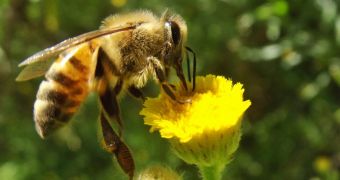This April 16, environmental group Greenpeace published a new report saying that, according to recent investigations, traces of dozens of toxic chemicals can be found in the pollen that European bees collect in the fields and then bring back to their hives.
On its website, the organization details that, in order to research how various chemical compounds threaten Europe's bee population, specialists collected and analyzed over 100 pollen samples.
The samples were gathered during a single foraging season. To ensure that their analysis will provide an accurate picture of the threats Europe's bee population is now facing, specialists collected them from as many as 12 different countries. Greenpeace details that, while analyzing the makeup of these pollen samples, researchers with the organization managed to pin down traces of as many as 53 different toxic chemicals originating from a fairly wide variety of pesticides.
Of these 53 toxic chemical compounds, 17 were found to be present in two-thirds of the over 100 pollen samples that researchers looked at as part of this investigation, the environmental group goes on to detail.
Greenpeace says that, since all the bees found in a hive feed on pollen, chances are that the toxic chemicals found in the latter constitute a threat to the wellbeing of these insects. Since bees are in the business of pollinating crops, odds are that agricultural practices are also affected.
“The poisoned pollen is a direct threat to the entire bee population, because the colony, including larvae, worker bees and drones, eat this pollen as a source of protein and energy,” the environmental group writes on its website.
“The exposure of bees and bee larvae to such varied toxic pesticides is significant because, according to recent research, the interaction of different chemical components can lead to a cocktail effect which can be more toxic for bees than a single chemical,” it adds.
Greenpeace argues that, apart from affecting bees directly, exposure to these chemical compounds can cause the insects to become more vulnerable to various diseases. In time, this is likely to further contribute to a decline in Europe's bee population.
Given the fact that bees pollinate about one-third of crops and most of the world's flowering plants, and, in doing so, perform services whose annual value is one of about €265 billion (nearly $366 billion), the organization urges that measures to keep them safe be implemented without delay.
Specifically, the organization asks that policy makers move to implement bans on the use of pesticides that have been documented to harm these insects. “A ban on all bee harming pesticides is urgently needed. We need to have ambitious bee action plans to monitor the health of bees and other pollinators and to reduce their overall exposure to hazardous chemicals,” Greenpeace says.

 14 DAY TRIAL //
14 DAY TRIAL //